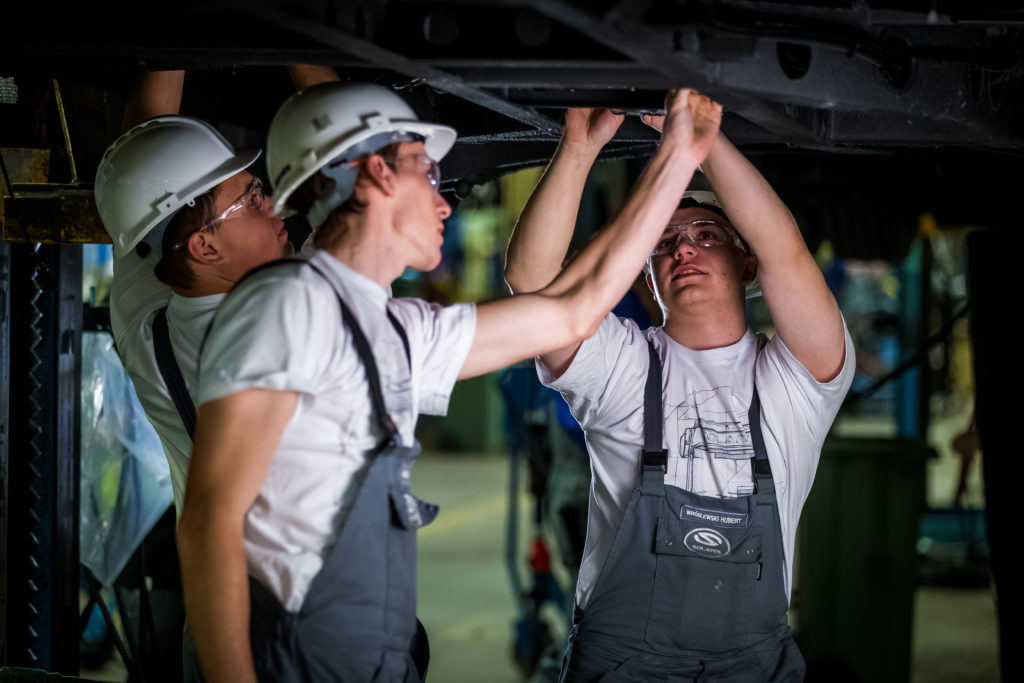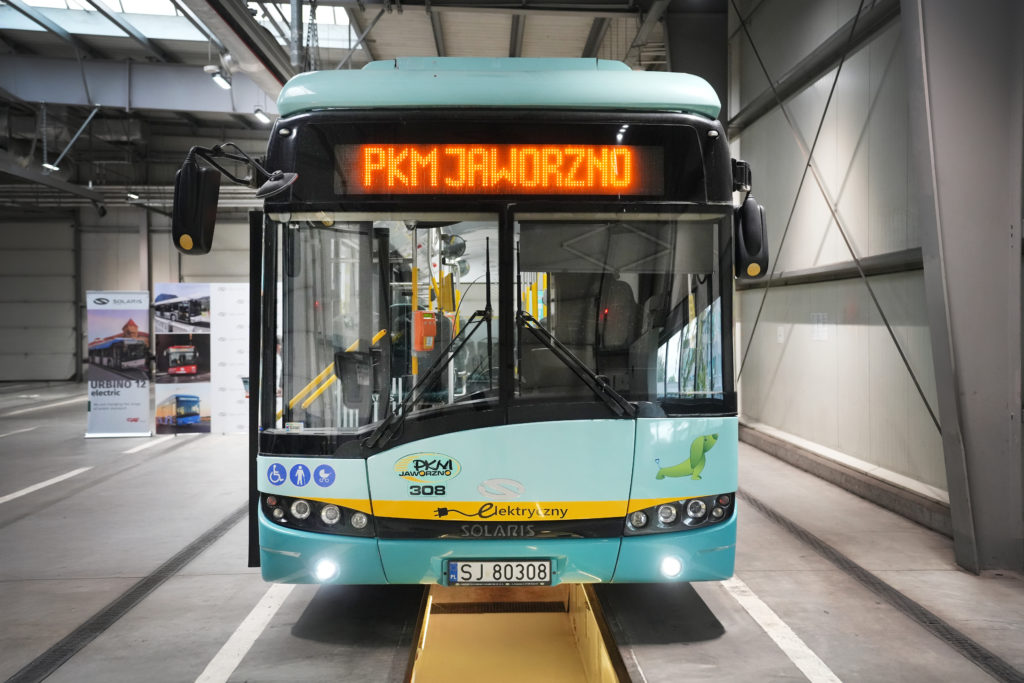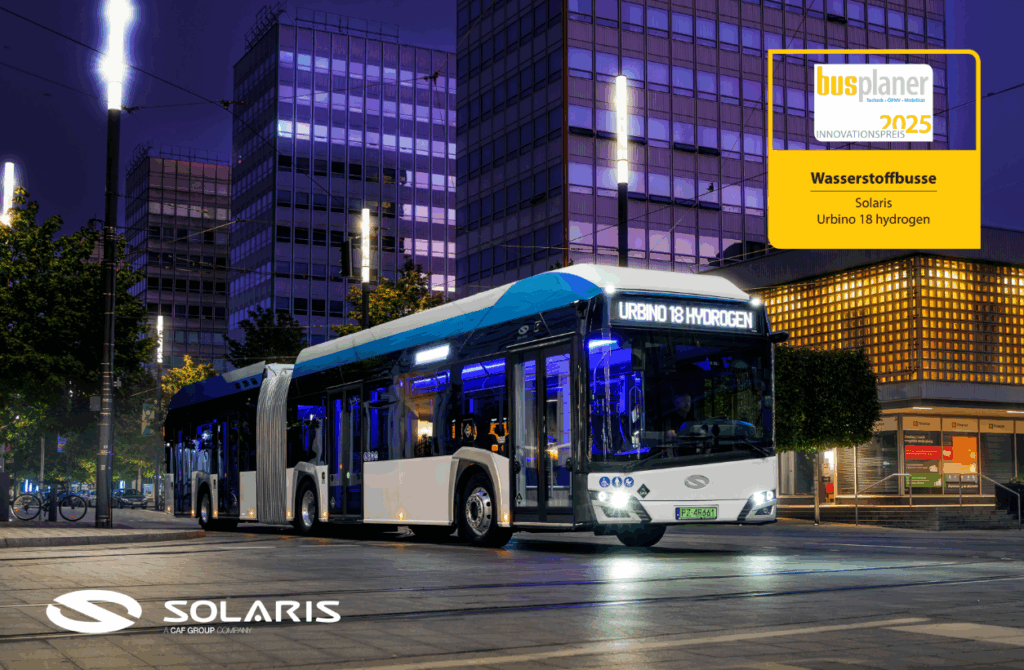SOLARIS
TROLLINO:
touring Europe
Modern, emission-free, quiet, catenary-independent. Newly manufactured trolleybuses represent a proven way of sustainable mobility in today’s metropolis. How do trolleybus systems look in Riga, Gdynia, Bergen, Bucharest, Prague, Bratislava, and Arnhem? Enjoy a review of the most interesting trolleybus projects of recent years!
Trolleybuses are a solution used in 300 cities worldwide. Solaris has supplied trolleybuses to over 60 of them. Watching the continuous development of this segment, we offer further innovations and premieres in this area, such as the 24-meter bi-articulated trolleybus, providing passenger capacity almost akin to that of a tram.
PRAGUE
The longest trolleybuses on their way to the airport
Trolleybuses returned to Prague in 2019 after over 50 years of absence. Just a few years after this historic restoration, the impressive vehicles, the longest trolleybuses ever used in public transportation in the Czech Republic, hit the streets of the Czech capital in 2023. The Trollino 24, 24-meter articulated buses with double articulation and a passenger capacity of nearly 180 people, now operate on the emission-free trolleybus Line 59, connecting Veleslavín station to Prague Airport.
The Trollino 24s are the perfect answer to the increasing transportation needs of the congested metropolis. Thanks to them, the line’s capacity has increased by up to 30%, which has significantly translated into passenger comfort. The bi-articulated trolleybus is a symbol of changes in the way and possibilities of a journey. Despite its length, the double-articulated trolleybus is quiet and modern, handling comparably to conventional buses.

GDYNIA
Supertrolleybuses – between e-buses and trolleybuses
Gdynia, on the Baltic Sea, is known as one of the capitals of trolleybus technology in Europe. Over a hundred Trollinos transporting passengers daily have become a permanent fixture in the port city’s landscape. Interestingly, it was Gdynia that acquired the first trolleybus manufactured by Solaris in 2000. Two decades later, the city’s fleet was joined by special vehicles – supertrolleybuses, the Trollino 12 electric. These models combine the advantages of electric buses with the reliability of traditional trolleybuses. There are six of them, and they have brought zero-emission public transportation to new districts located in the north of Gdynia. Thanks to them, city mobility has significantly improved.
Gdynia is already familiar with trolleybuses equipped with batteries that are charged while driving. Supertrolleybuses, however, represent a new level of technology. These vehicles have dual approval, both as trolleybuses and as electric buses.
The Trollino 12 models feature 87 kWh batteries as their main energy source, with pantographs for battery charging. They can be charged in two modes – while moving and using power from the catenary, or while parked and plugged in. The battery allows 70% of the route to be covered off-grid. During the remaining 30% of the route, the supertrolleybus recharges.
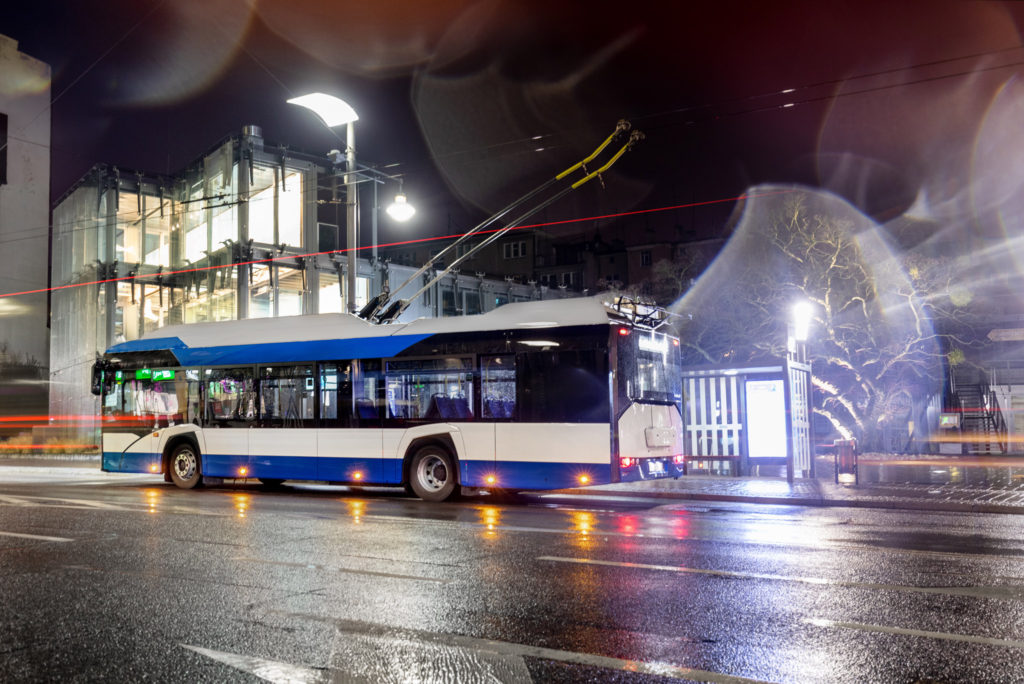
BUCHAREST
Huge investment in new fleet
Bucharest has the largest transportation network in Romania and one of the largest in Europe. The city has as many as 15 trolleybus lines, which make up more than 160 km of routes on which 265 vehicles run. Sadly, a significant portion of these trolleybuses were old and dated back to the twentieth century. But Bucharest sees the future in this technology—in 2022, the city made an impressive investment of 100 innovative Trollino 12 vehicles, equipped with modern safety systems and passenger and driver amenities, as well as batteries.
The purchase of zero-emission vehicles marks another step for Bucharest toward improving urban quality of life. The 12-meter trolleybuses feature Solaris High Power 60 kWh batteries, allowing them to cover distances up to 20 km without connecting to the traction network. The traction batteries are charged while driving (In-Motion Charging), and at night, at the depot.
Click >here< to see a video of our Trollinos in action in Bucharest.

BERGEN
The country’s only trolleybus line
In 2020, Solaris Trollinos made their debut in Norway, and roll out on the only trolleybus line in the country and one of two in Scandinavia.
Line 2 in Bergen spans 7.5 km and has been in operation since 1950. Ten Solaris Trollino 18s are equipped with 55 kWh batteries, allowing them to travel about 11 kilometers without being connected to the catenary. This capability is crucial, as Line 2 was recently extended to a new section in another part of Bergen. To reach it, the Trollino must solely rely on batteries for a 2 km stretch through the picturesque city center before reconnecting to the traction system and continuing their journey.

RIGA
Hydrogen trolleybuses
More than 160 Solaris trolleybuses are running on the streets of Riga. Among them are also vehicles unique in Europe – trolleybuses equipped with batteries, as well as hydrogen fuel cells. The hydrogen system further extends the range the vehicle can cover independently from the catenary. Thanks to this technology, each Solaris Trollino 18.75 can go up to 100 km without relying on power from the overhead wires! The innovative concept has been implemented on Riga’s Line 4, where 10 vehicles of this type are currently operating.
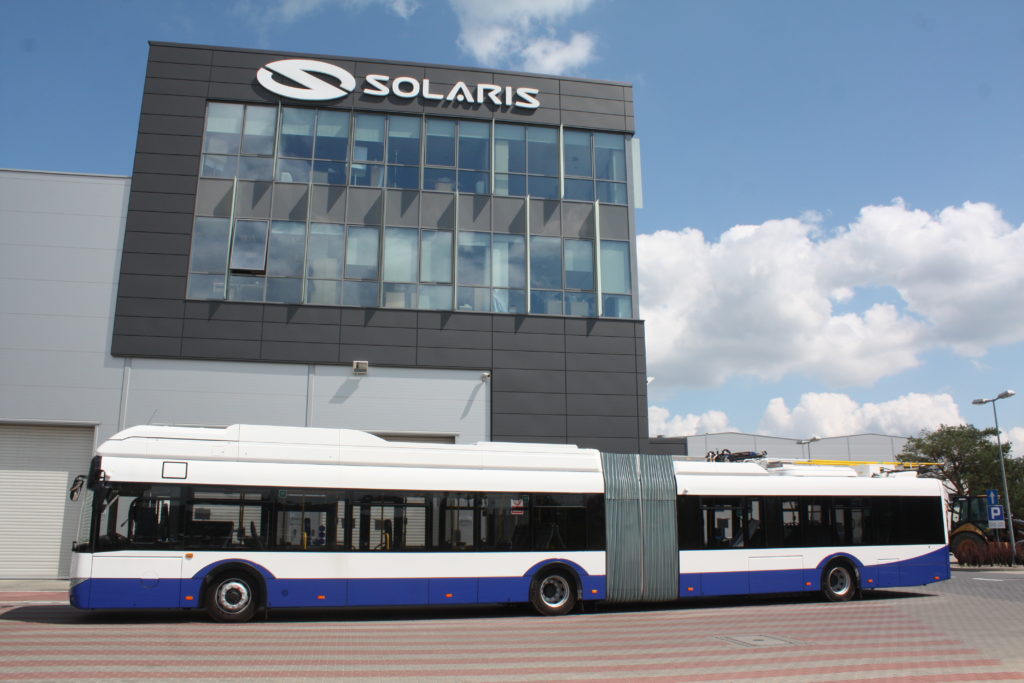
BRATISLAVA
24-meter Trollino on the busiest line
On Line 71 in Bratislava, between the Main Station, Miletičova Street, and Dolné Hony, Solaris’ 24-meter bi-articulated Trollino can also be found. Line 71 is popular and the most crowded line in Slovakia’s capital. Therefore, the spacious trolleybus proves to be an ideal solution for a metropolis with heavily trafficked routes. With 16 mega-trolleybuses accommodating approximately 200 passengers each, the line’s capacity per trip has been increased by nearly 50 people. During peak hours, trolleybuses operate every 3-4 minutes, significantly relieving the line’s demand.

Solaris Trollino 24 in Bratislava. Photo: DPB.
ARNHEM
Trollino in MetroStyle’s metropolitan version
Arnhem is the only city in the Netherlands with a trolleybus system, now encompassing six lines served by 43 articulated trolleybuses. In early 2024, the urban fleet was enriched with modern Solaris Trollino 18 vehicles in an exceptionally elegant Metrostyle design.
The delivered trolleybuses are equipped with In-Motion-Charging technology and batteries, giving them the ability to drive autonomously for more than 12 kilometers. Such a performance is ideal for service on Line 352, the city’s main route connecting Arnhem’s central station with the bus station in the municipality of Wageningen. The line spans approximately 17 kilometers and was previously served by buses. The percentage of the route traveled autonomously, solely on batteries and detached from the trolleybus network, amounts to 75%. The carrier’s plans include extending the line from Wageningen to Ede-Wageningen, in which case the trolleybus will travel up to 82% of the route autonomously.

Trollino 18 Metrostyle. Photo: Mikolaj Bartlomiejczyk.
Trolleybuses are gaining popularity as a modern, emission-free solution, benefiting both residents and the environment. Technological advancements have made them an excellent alternative to combustion-engine vehicles and a symbol of sustainable urban mobility. Combining tradition with modernity, they successfully meet the challenges of contemporary urban areas.

